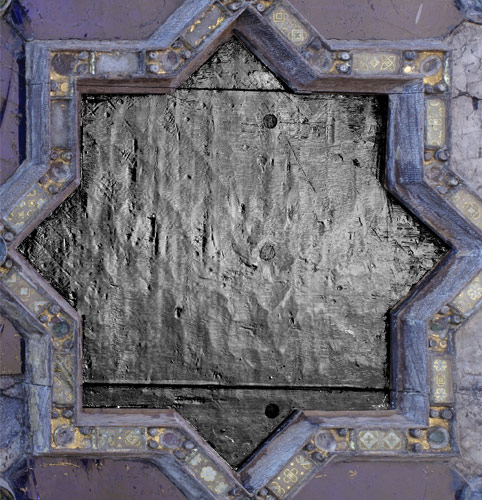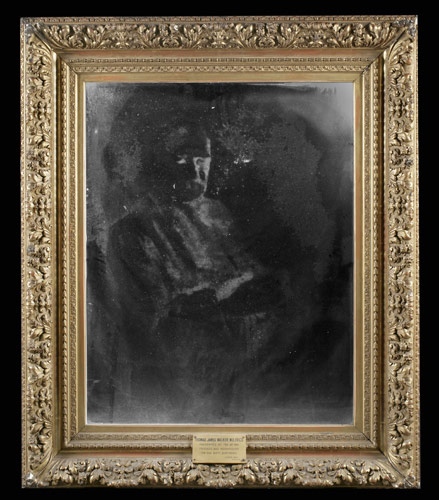Raking Light
Simply placing a light at an oblique angle to a painting can reveal information clearly. Raking light is often used to document craqeulure, cupping or tenting paint, uneven tension in a canvas, or warp in a painting on a panel support. We are researching the use of more accurate surface mapping techniqes to complement this techhnique
In the image above, the indentations around the 3 punctures to the painting are evident. It also shows the canvas texture, indicating that the paint was applied in a thin and fluid state.
Specular Light
Recording how light is reflected from the surface of an object can help to provide information about the structure beneath. This technique, when used with a degree of enhancing with digital imaging, can illustrate quite subtle variations in the surface. In many instances, when used with wooden surfaces, the original tool marks can be clearly seen. In other instances virtually invisible indentations can be identified, which may provide vital information to the conservators.

Transmitted Light
In some instances transmitted light can be used to provide information not otherwise visible. Light can be used to pass through the picture to image layers below the surface and the structure of the substrate. Although the outer layers may mask some of the information, useful data can still be gained about the history or make up of the object.
The transmitted light image above is taken from a detail of a vellum page in a medieval manuscript. The page has been used twice, with the original design being covered over at a later date. Transmitted light image lets us see part of the obscured pattern image beneath.
Dark Ground or Dark Field
Although dark ground illumination is commonly used in microscopy, we have adapted the technique to use on a larger scale. In this way very fine detail can be recorded that would otherwise be virtually invisible to the naked eye. This is again a useful source of research material and photographic documentation.

The faint powdery deposits on the reverse of the glazing, seen in the image above, make the sitter clearly visible even though the painting has been removed from the frame.
The deposits on the glass, clearly visible in the image above were only faintly visible under normal lighting. They were analysed and found to be a combination of mineral and fungal deposits, drawn differentially to the glass because of the differing paint surface below.
